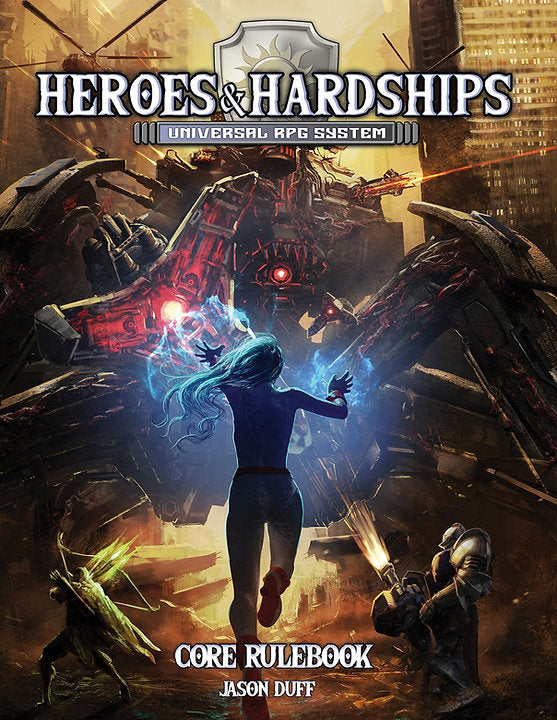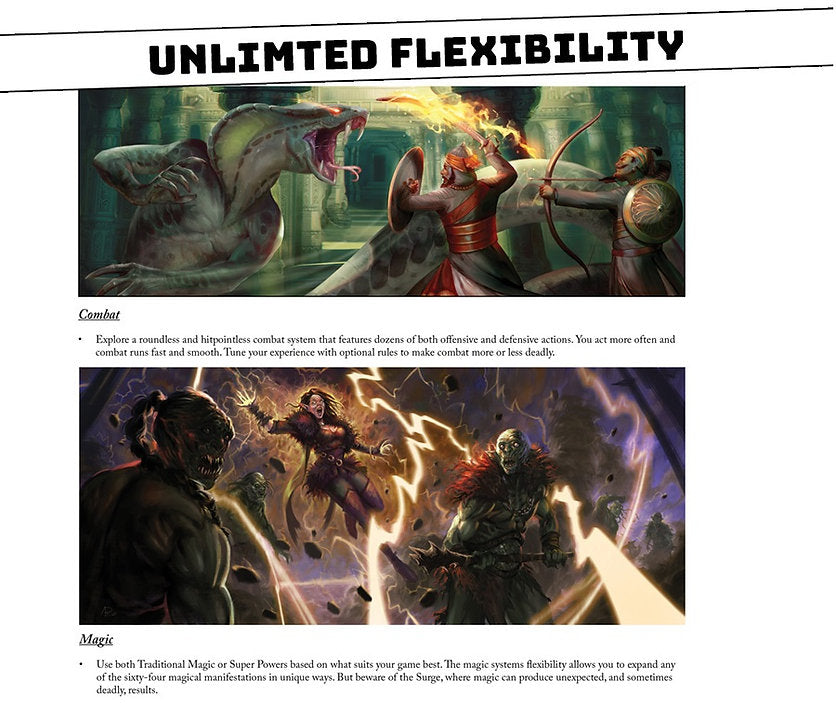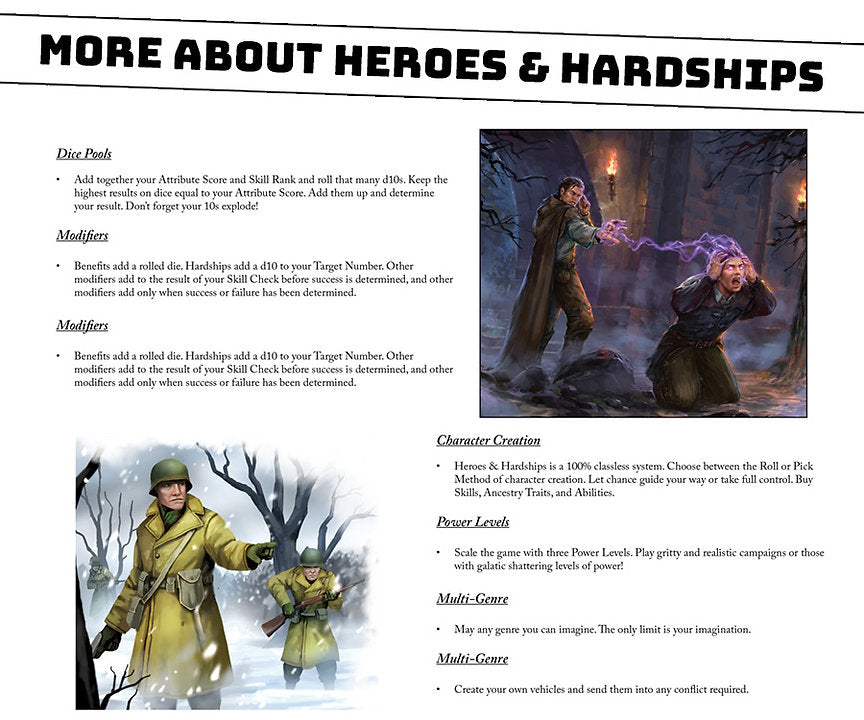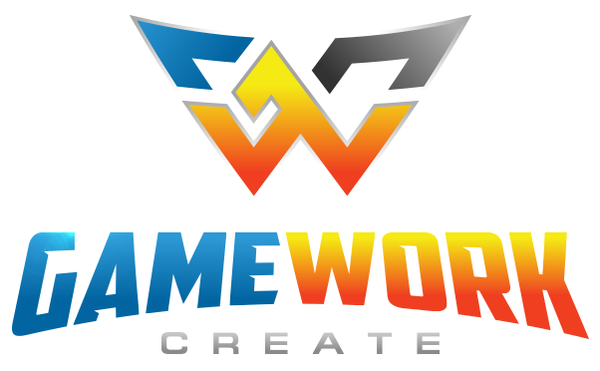Jason Duff
Heroes & Hardships Core Rulebook
Heroes & Hardships Core Rulebook
Couldn't load pickup availability
Any Setting! Any Character! Any Adventure! Anything You Can Imagine!
Heroes & Hardships is a universal roleplaying game that allows gamemasters to craft any story they desire. Heroes & Hardships contains many options to facilitate diverse styles and genres of play; GMs can easily create standard fantasy, sci-fi, modern, historical, and super hero games. And of course, feel free to readily mix and match all of these genres in any way they see fit.
In Heroes & Hardships you will find:
A universal RPG system suitable for any setting or genre;
- Extreme customization, from optional rules to hundreds of character options;
- Tightly designed game systems that work seamlessly together or apart;
- Dangerous and tactical combat, with optional rules for simpler forms of violence;
- Two interconnected magic systems for wizards and super heroes alike;
- Vehicle creation and combat;
- A bestiary full of medieval, fantasy, modern, and sci-fi adversaries;
- Extreme quality, from AAA game industry artists & layout;
- And much more!

Dice Pools
As mentioned above, dice pools are formed on any Skill Check. 95% of your rolls will be some form of a Skill Check.
Determine what skill to use and add your Skill Rank and the governing Attribute Score together. This is how many d10s you roll. Once you roll, add a number of dice together equal to your Attribute Score. That is your result. Compare that result to a target number set by the GM or an opposed Skill Check.
Modifiers
Benefits add a rolled dice, and Hardships add to the target number. There are also Pre and Post Roll modifiers. Pre-Roll Modifiers help you succeed, and Post-Roll modifiers increase how well you do.
Character Creation
There are two methods of character creation. You may roll for your Attribute Scores randomly, or use a point-buy system based on the game’s Power Level.
Once you have your Attribute Scores, you use the total in each Attribute category (Physical, Mental, Social, and Fate) to buy your Skill Ranks. Once Skill Ranks are purchased, you use all your ranks in each category to purchase Abilities and Ancestry Traits.
You may purchase Skill Ranks and Abilities from different categories at a higher cost. There are no classes or archetypes. You build the character your way without restriction.
Power Levels
Heroes & Hardships scales to whatever type of game the GM wants to run. Want a gritty experience? Use Power Level 1. What a galactic spanning conflict with massive super powers? Use Power Level 3. The entire system is built with Power Level scaling in mind.
Combat
Combat is gritty and full of options. There are dozens of combat actions that are available to players to use that fit their character design and the situation best.
Not unlike many combat systems, Heroes & Hardships uses an Initiative to start off combat. Unlike many systems, however, only in the case of an Action Point tie does Initiative determine the order of action.
When someone uses an Action, it moves them along the Combat Track a number of Action Points associated with the specific action they've used. The Combat Track never ends, and keeps going until the combat has concluded. Whomever is lowest on the Combat Track goes next. If there is a tie, the character with the highest Initiative acts first.
There are no rounds in Heroes & Hardships. The Combat Track allows combat to move quicker, and for players to act more often.
Hit Pointless System
There are no Hit Points in Heroes & Hardships. For physical damage, there are Injuries and Wounds. Wounds are suffered when taking damage over a character’s Wound Level, and Injuries are received when taking damage over their Injury Level, but not equal to their Wound Level.
Injuries penalize all Skill Checks by -3, and Wounds penalize all Skill Checks by 1 Hardship until Wound Effects are determined. Wound Effects are modifiers to a character’s Attribute Scores. These can be healed over time, but if not, these losses become permanent.
Don’t forget, killing a foe in one blow is possible as well. Just hit them for more damage than double their Wound Level. This is called their Mortality Threshold. They have to make a Death Roll then. If they fail, they die. (This goes for PCs too …)
Vehicles
Heroes & Hardships includes a full vehicle creation and combat system. Both are very similar to those for character creation and combat. You won’t have to learn an entirely new system to use vehicles in your game.
Magic
There are two types of magic systems in Heroes & Hardships, but they both work very similarly.
Traditional Magic is for sorcerers and magicians, while Super Powers is for superheroes and innate magical properties.
Both require Skill Checks based on the manifestation they are attempting to use. There are five different magical skills that can be used. Traditional Magic is extremely flexible. Each manifestation has certain properties that can be increased at greater risk for failure .. or worse. Traditional Magic is always resisted by how difficult the spell is, not the target of that spell.
Super Powers are inflexible, and all the upgrades must be purchased with experience points or ability points at character creation. They cannot be done on the fly. However, they are far easier to activate, and are resisted directly by the target of the power.
There are 64 manifestations in the core rulebook that work with both Traditional Magic and Super Powers.
Equipment
While the core book Heroes & Hardships describes a variety of weapons and armor, the system is specifically designed to create your own equipment of all types with ease.
Adversaries
We have included a bestiary, but for a system that covers every setting and genre, there is no way we could include everything someone might need.
So we put the power in the GMs hands with a simple but detailed process of creating adversaries. These could be an Arch-Nemesis that is more powerful than the PCs, a PC-level adversaries, simple Foes, or the rank and file Minions.
Share








